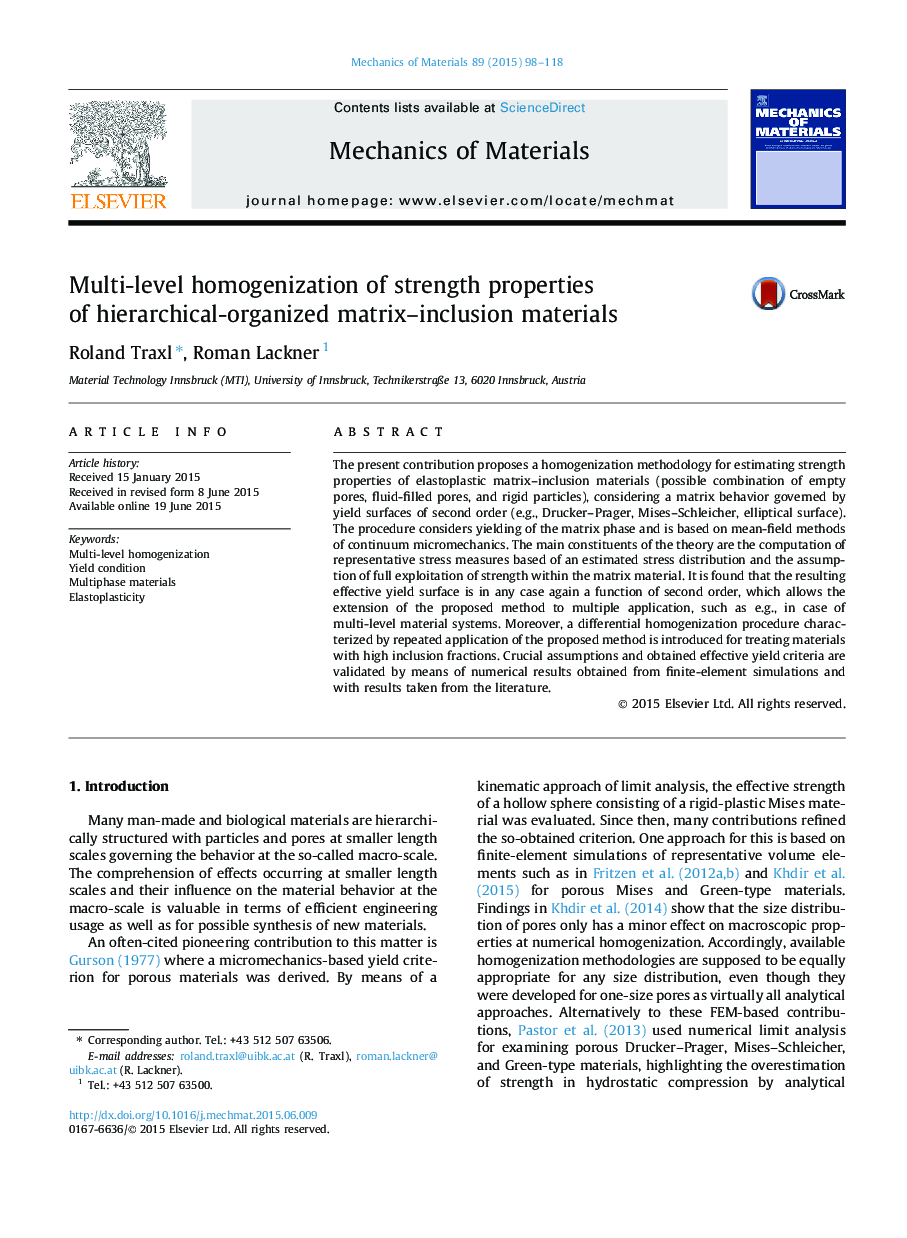| Article ID | Journal | Published Year | Pages | File Type |
|---|---|---|---|---|
| 800169 | Mechanics of Materials | 2015 | 21 Pages |
•Closed-form solution for effective yield criterion of matrix–inclusion materials.•Consideration of matrix materials following any second-order yield function.•Simultaneous consideration of pores, particles, and fluid-filled pores.•Straight-forward extension to multi-step strength homogenization.•Influence of hierarchical-organization of inclusions on effective yield criterion.
The present contribution proposes a homogenization methodology for estimating strength properties of elastoplastic matrix–inclusion materials (possible combination of empty pores, fluid-filled pores, and rigid particles), considering a matrix behavior governed by yield surfaces of second order (e.g., Drucker–Prager, Mises–Schleicher, elliptical surface). The procedure considers yielding of the matrix phase and is based on mean-field methods of continuum micromechanics. The main constituents of the theory are the computation of representative stress measures based of an estimated stress distribution and the assumption of full exploitation of strength within the matrix material. It is found that the resulting effective yield surface is in any case again a function of second order, which allows the extension of the proposed method to multiple application, such as e.g., in case of multi-level material systems. Moreover, a differential homogenization procedure characterized by repeated application of the proposed method is introduced for treating materials with high inclusion fractions. Crucial assumptions and obtained effective yield criteria are validated by means of numerical results obtained from finite-element simulations and with results taken from the literature.
